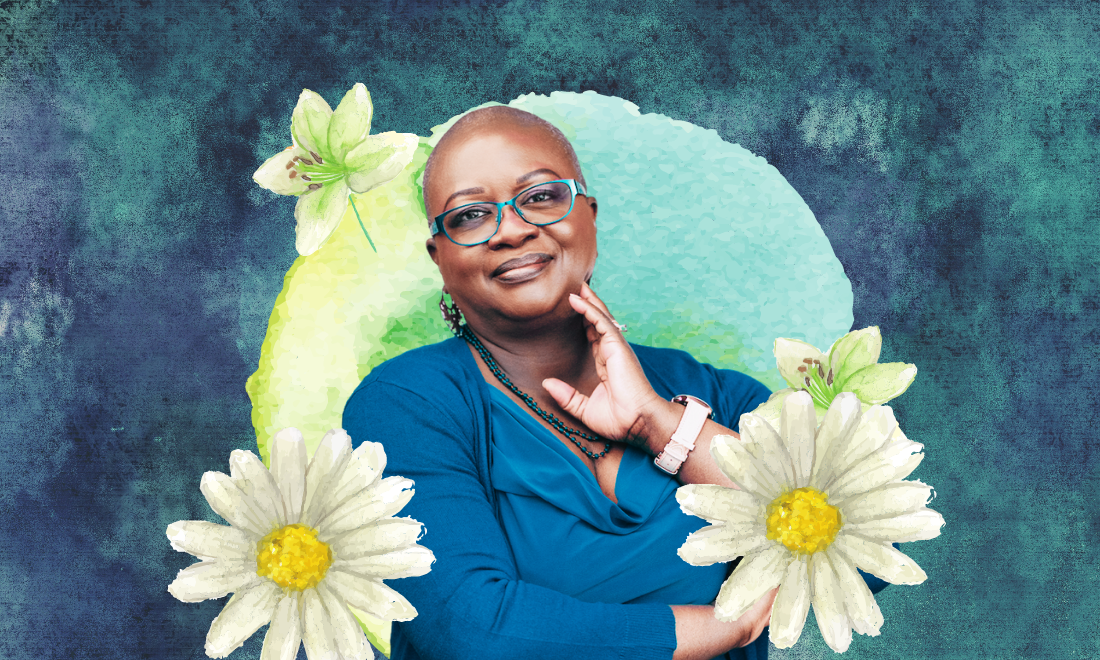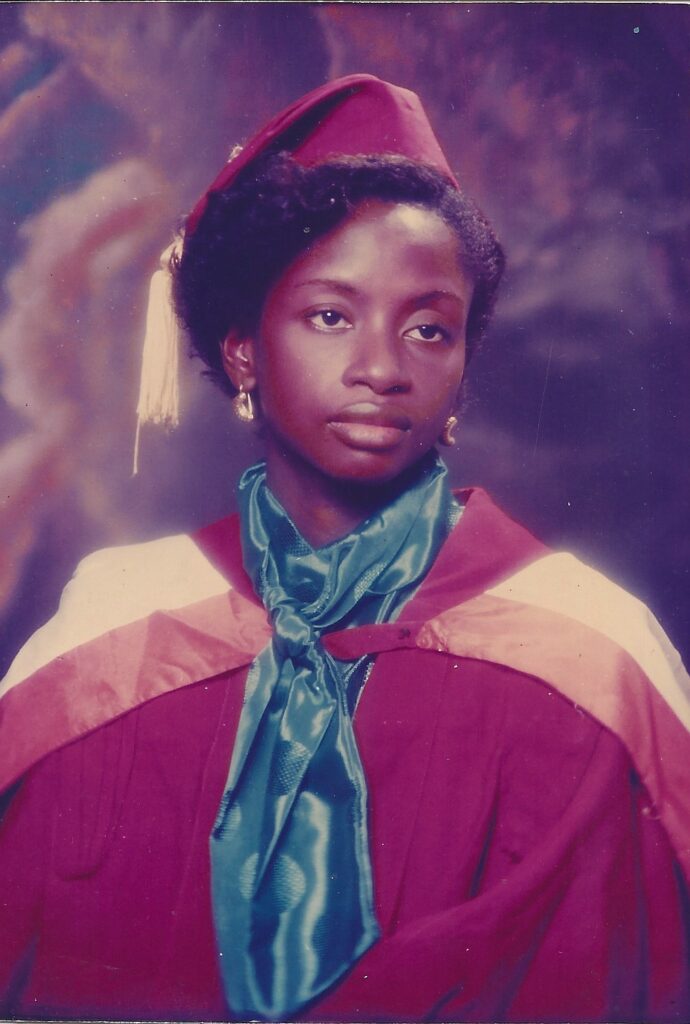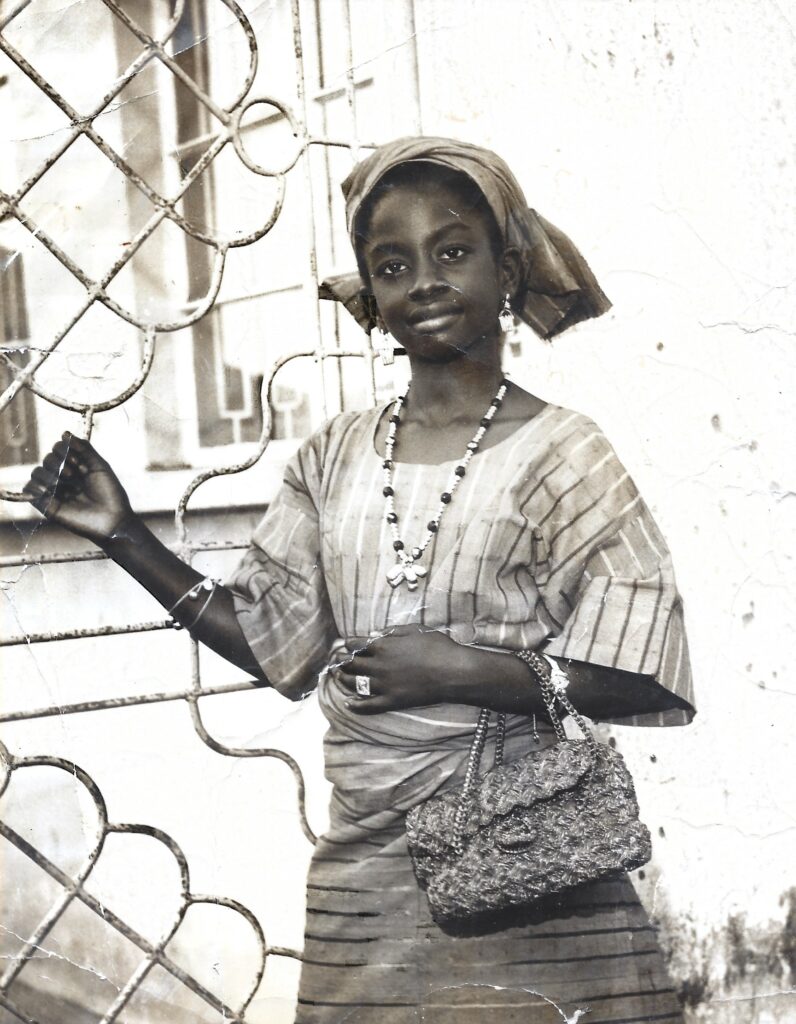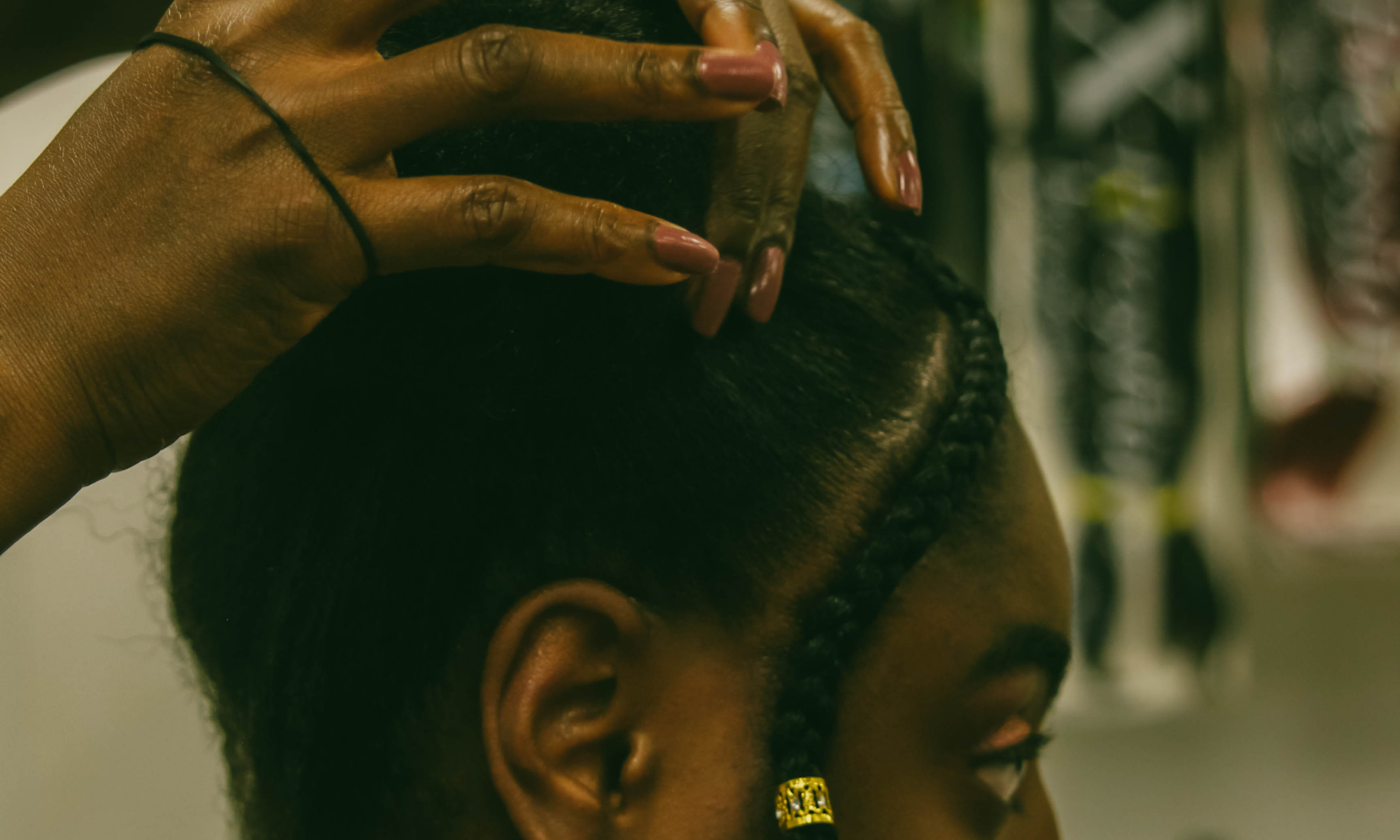
How the menopause forced me to embrace a bald head
When the hair on Florence Olajide’s scalp fell out and grew on her body instead, she had no idea the menopause could be responsible.
Florence Ọlájídé and Editors
19 Jul 2021
I settled into the svelte black leather couch as Kelly, my consultant, moved behind me, donning a pair of surgical gloves and arranging several ink pots on a tray. Kelly picked up an implement that looked like a bulky pen, and I braced. The first few strokes buzzed against my scalp, sending through a mildly sharp sensation that wasn’t as bad as I feared. In fact, compared to the pain of laser hair treatments or electrolysis, this was a doddle. I relaxed and my mind flitted over the past few years and the events of that led to me getting my first tattoo, not at 80 on my backside as I had promised my children, but at 57 on my bald scalp.
My hair and I have always had a love-hate relationship. As a child, my tight 4C coils made for painful weekly plaiting sessions as my mother tugged and pulled, trying to ease out the kinks and knots. Aged 10, fearing my inability to manage it on my own, she cut it all off before sending me off to boarding school in Nigeria. At 12, I began growing it out, but the painful weekly hairdressing sessions continued. I vowed then, that at the first opportunity, I would perm my hair rod-straight like all the modern ladies in Lagos. The day I finished secondary school, I headed for the hairdressers. In the years that followed, suffering a low boredom threshold and an identity crisis, I tried it all, layered bobs, the short pixie, jerry curls and colourants, interspersed with the occasional braids. By the time I hit my forties, I favoured short hair in whatever form, preferably with copper highlights to cover a considerable amount of grey, but my hair fortunes were about to take a turn for the worse.
“The menopause, not content with having me wanting to whip off my clothes or shiver under a blanket, was wreaking havoc with my hair”
In my early 50s, I started noticing some thinning in the frontal sections. My daughter, an avid hair blogger at the time, encouraged me to consult a trichologist in central London, who was reputedly knowledgeable about Black hair. The trichologist calmed my fears, told me there was nothing to worry about and sent me home with a bag-load of her products. I shouldn’t have listened. On my daughter’s further advice, and to make up for the abuse my hair had suffered through the decades, I cut off my perm, went natural and dyed my hair only with henna and various combinations of amla, cassia and indigo to create that copper hue I loved so much. Then I discovered the twist sponge and revelled in its magical ability to create teeny-weeny, well defined curls at a flick of my wrist. However, unbeknown to me, the sponge was damaging my already weakened hair follicles and by my 55th birthday, I knew I had a problem. A big one. It was time to visit my GP.
My GP examined my receding hairline and decided I needed to see a dermatologist. Three months later, the dermatologist recommended a scalp biopsy to rule out any insidious underlying conditions. The biopsy from two tiny squares of skin taken from both sides of my balding patch revealed nothing untoward other than menopause related androgenic alopecia. The menopause, not content with having me wanting to whip off my clothes or shiver under a blanket, was wreaking havoc with my hair.
Around the time that I really started losing the hair on my scalp, I began to grow it elsewhere. The menopause, it seemed, was sending strange messages to my body, telling it to grow hair on my face instead of my head. Not fine wispy hair, but thick, coarse, long, black hair that covered my face from cheek to neck. The irony wasn’t lost on me. I was desperately trying to grow hair in one area and lose it from another. I consulted Dr Google and found out the condition is called hirsutism, which can be triggered by the menopause as well as other conditions, but treatment options were limited and expensive.
By now, thanks to the pandemic and lockdown, I had completed the memoir I had been writing for over a decade and secured a publishing deal. I reckoned that if my book were successful, I might soon have my image plastered over the media, but what kind of face would that be? Could I carry off the bald look? Reputedly, it looked good on Black men, sexy even, some said, but did the same accolade apply to women? I prided myself on looking good. My granddaughters even called me GG, pronounced ‘Gege’ and short for ‘glamorous granny’ (yeah, vain, I know). How glamorous would I be with no hair?
“Although I had prepared for this mentally for weeks, it was still a shock to see my entire head bald”
In the end, I decided the opinion of others didn’t count. I started taking the short afro down a step at each cut, sizing myself up in the mirror and leaving it for a few days to get used to the idea. Fortunately, I have a nicely rounded skull and the look suited my face. Next, I sourced extra-large earrings, to draw people’s attention away from my head, as the fashion pages advised. Then, I narrowed my long list of clinics providing scalp micro-pigmentation down to two and finally chose the Illuminate Skin Clinic in Kings Hill, Kent. Kelly, the hair restoration consultant, was extremely helpful and professional, and she informed me of a few other potential treatments I hadn’t known about. Finally, a day before my treatment, I stood before my mirror and shaved all my hair off. Although I had prepared for this mentally for weeks, it was still a shock to see my entire head bald. My instinctive reaction was to cover it up under a turban, and for a while, that’s exactly what I did.
That was six months ago. Now my bald head feels as natural as breathing. I love the freedom of getting up in the morning and not having to worry about my hair. I still miss the colour though, but I have accepted my grey specks with grace and for unique looks, I rely on my array of very large earrings. While writing this piece, I stumbled across a Good Housekeeping article written by Paula Akpan. It noted the absence of any extensive research into the needs of menopausal Black women who apparently suffer worsening symptoms over time, compared to their white counterparts.
I am now at peace with my alopecia, but I continue to battle the demon that is hirsutism. Now that I have started with electrolysis, I intend to see it through to the bitter end. But a word for the wise – if you have a lot of hair to lose, make sure you have deep pockets before trying electrolysis. I stopped counting the cost after three months. Hopefully, someday I will see the last of those pesky little hairs and heave a Hallelujah!
Florence Ọlájídé is the author of Coconut: A Black girl fostered by a white family in the 1960s and her search for belonging and identity, published by Thread on 13 July 2021. Order now.
Florence will be speaking at this year’s Primadonna Festival (30 July – 1 Aug), the first fully inclusive celebration of emerging and established artistic talent. Tickets available here and including a Pay What You Can scheme to make the festival fully accessible.











